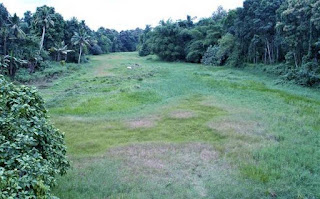The Hindu,
KALPETTA
KALPETTA
A
three-day monsoon bird survey, organised jointly by the Forest
Department, College of Forestry, Thrissur, and the Hume Centre for
Ecology and Wildlife Biology (HCEWB), in the North Wayanad Division
recently recorded 92 species.
No bird surveys have been conducted in the forest division in the past eight years. The survey found five species of bulbuls, seven species of babblers, five species of pigeons, and three species of raptors. It recorded Bright Headed Cisticola and broad-tailed grassland birds in the higher grasslands of the Brahmagiri hills. “Presence of these birds showed higher conservation significance of the Brahmagiri grasslands,” C.K. Vishnudas and R.L Rathish of the HCEWB, which performed scientific and technical coordination of the survey, told The Hindu.
“Other species include Rufous-Bellied Hawk Eagle, Lesser Coucal, ”Mr. Vishnudas added. As many as 25 birdwatchers from Kerala, Karnataka, and Tamil Nadu participated in the survey. The survey was conducted during torrential rain braving leeches. “This was one of the toughest expeditions, especially during the monsoon. ,” Hemanth Batroy from Bengaluru, who led a trek to the Banasura mountains for the survey, said. The survey reports will aid in sanctuary management, North Wayanad Divisional Forest Officer K.C. Prasad said. The logistic support for the survey was coordinated by range forest officers M.N. Najmal Ameen, Prem Shamir, Arunesh, and K.J.John, section forest officer of the Mananthavadi forest range.
Birdwatchers Hemanth Batroy (Bengaluru), A. Shwetha (Mysuru), H. Sahana (Mysuru) Arun Chungapally, Muhammad Aslam, Abhijith, C. Anusreedha, and R.L Rathish led various camps.
No bird surveys have been conducted in the forest division in the past eight years. The survey found five species of bulbuls, seven species of babblers, five species of pigeons, and three species of raptors. It recorded Bright Headed Cisticola and broad-tailed grassland birds in the higher grasslands of the Brahmagiri hills. “Presence of these birds showed higher conservation significance of the Brahmagiri grasslands,” C.K. Vishnudas and R.L Rathish of the HCEWB, which performed scientific and technical coordination of the survey, told The Hindu.
“Other species include Rufous-Bellied Hawk Eagle, Lesser Coucal, ”Mr. Vishnudas added. As many as 25 birdwatchers from Kerala, Karnataka, and Tamil Nadu participated in the survey. The survey was conducted during torrential rain braving leeches. “This was one of the toughest expeditions, especially during the monsoon. ,” Hemanth Batroy from Bengaluru, who led a trek to the Banasura mountains for the survey, said. The survey reports will aid in sanctuary management, North Wayanad Divisional Forest Officer K.C. Prasad said. The logistic support for the survey was coordinated by range forest officers M.N. Najmal Ameen, Prem Shamir, Arunesh, and K.J.John, section forest officer of the Mananthavadi forest range.
Birdwatchers Hemanth Batroy (Bengaluru), A. Shwetha (Mysuru), H. Sahana (Mysuru) Arun Chungapally, Muhammad Aslam, Abhijith, C. Anusreedha, and R.L Rathish led various camps.
















